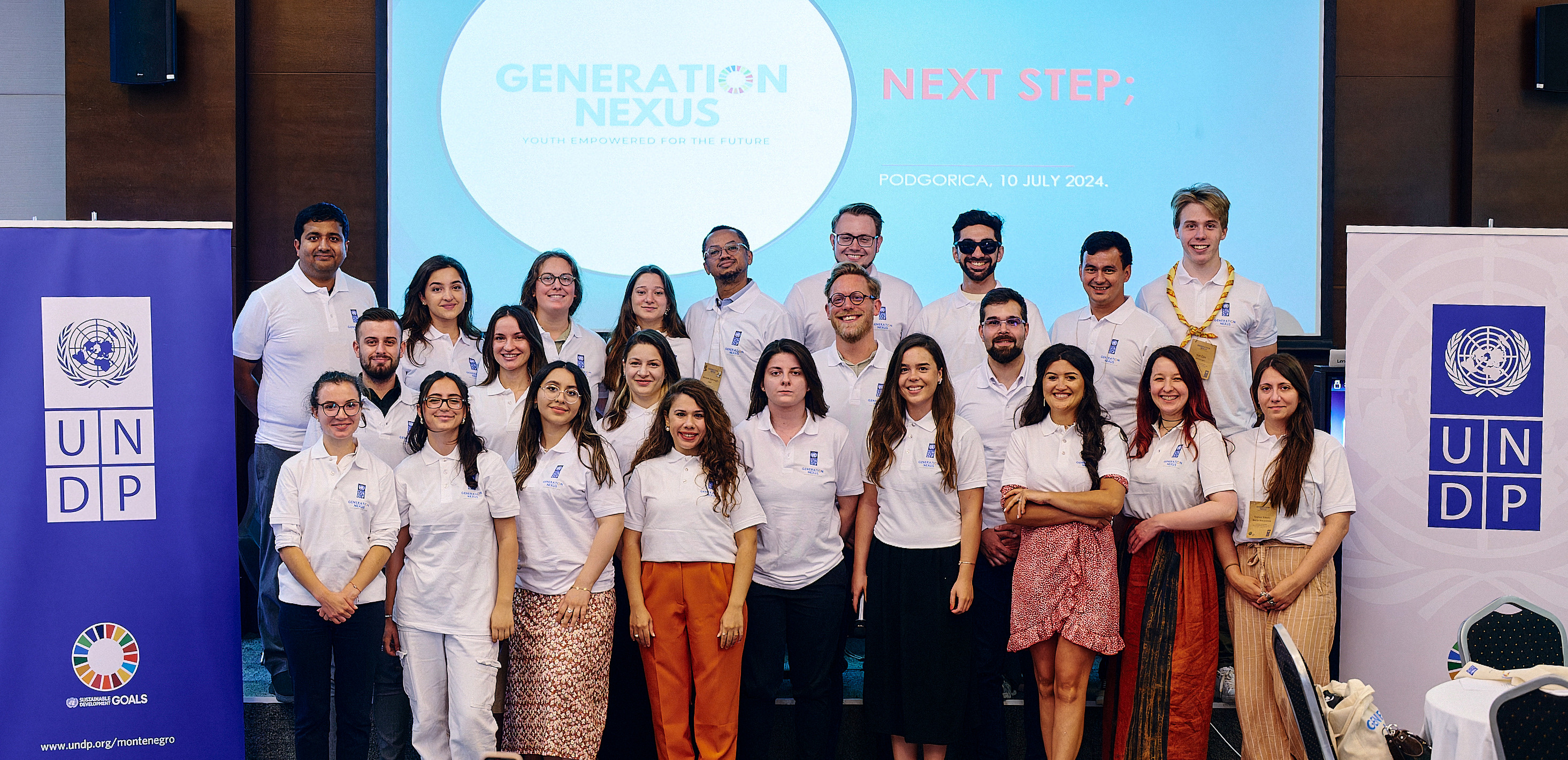Blooming hope: Reconnecting with nature for resilience and climate action in Ukraine
October 21, 2024

The war in Ukraine has had a devastating effect on the country's people and environment. The recovery and reconstruction process must take climate and nature into account.
“As a society, we were already losing our connection with nature, and the war threatens to widen this gap even further,” says 29-year-old Diana Popfalushi, from the city of Lviv in Ukraine.
“Climate action begins with restoring this primal bond at individual and community levels, only then can we have policies that make real impact,” she adds.
It has been two and half years since the full-scale Russian invasion of Ukraine, and it is not just the people who have suffered, but the environment as well. Air, soil and water are polluted from conflict-related activities. Targeting of industrial sites, and energy and water infrastructure has led to toxic substances being released into the environment and caused disasters like floods.
Critical ecosystems like forests and wetlands have been destroyed, leading to a significant loss of biodiversity. Disruption of agricultural practices has exacerbated land degradation, while displaced populations have increased pressure on natural resources. It is estimated that the cost of this damage stands at US$32 billion, and counting.
Diana sums it up aptly: “The war’s toll on the environment mirrors the deep scars left on the human population, and like us, it will take years, even decades, to heal.”


Diana Popfalushi is part of a community garden initiative that grows food for restaurants providing free meals for people in need.
Yet the offshoots of recovery are also emerging from nature. For Diana, this realization emerged as she participated in Rozsadnyk community garden project in Lviv, a unique initiative where people came together to grow vegetables in community gardens, which are delivered to restaurants that provided free meals for those in need, including internally-displaced populations.
“I saw the garden as more than just a place to grow food – it was a place where people across generations came together, restoring a sense of community while reconnecting with nature. Over time, it became a vibrant community hub, bringing people together and fostering a shared commitment to sustainability and peace,” she recalls.
Inspired by these gardens, Diana started thinking about the complexity of addressing recovery, peacebuilding and climate change simultaneously. It is estimated that the production of cement and steel for the reconstruction process alone will contribute up to 56 million tons of CO2 emissions.
“We must take into account the context of climate change adaptation and mitigation in the process of Ukraine’s development and reconstruction processes,” she underlines.

The Rozsadnyk community garden in Lviv has evolved into a vibrant hub where people come together to strengthen neighbourly bonds while reconnecting with nature.

There are two ways in which Diana is working on solutions to address this nexus between climate and peace – community engagement and climate policy mapping. The community garden in Lviv, created as a part of her work with NGO Plato, in addition to ensuring food security, became a space for environmental education and peacebuilding activities.
“Public awareness of the link between climate change and conflict is low, so we use storytelling to simplify complex issues and show how people can drive positive change, encouraging participation across age groups. In Lviv, we saw older members sharing traditional gardening knowledge, while the youth brought in new ideas and enthusiasm, together exploring how sustainable practices like composting, water conservation and using native species of plants can build climate resilience, while also reducing the carbon footprint associated with transporting food,” Diana explains.

Through community engagement and climate policy mapping, Diana aims to raise awareness of the links between climate change and conflict.
On the policy front, Diana is creating a prototype canvas to map climate policy at the local level. The goal is to develop a tool, called the Climate Index, that helps NGOs and communities easily assess their progress in implementing climate policies. Her plan involves mapping and interviewing stakeholders, evaluating the current policies of local governments and designing the canvas. Through this process, Diana hopes to create a comprehensive tool that aligns with community priorities, encourages collaboration and guides effective local action on climate change.
Engaging with like-minded peers has benefitted Diana immensely in her journey. As a part of UNDP’s Generation Nexus youth network, which aims to empower young leaders with the tools, knowledge and networks to create solutions for sustainable development and social cohesion, she has been able to expand her horizons.
“My participation in the Generation Nexus network is helping me to connect my experience and resources with other members. It is interesting to learn from the diverse range of initiatives and solutions for climate and peacebuilding in different countries,” she highlights.

Diana is part of UNDP’s Generation Nexus youth network, which connects young leaders working to create solutions for sustainable development and social cohesion.
Despite the conflict's devastation, Diana finds hope in nature's resilience. Her work reflects a deep commitment to healing both people and the environment.
“The garden project showed me that reconnecting with nature is key to building resilience,” she says. “Our efforts in peacebuilding and climate action must go hand in hand.”
Through her work, Diana continues to empower communities, helping them recognize the importance of sustainable practices and local climate policies.
As Ukraine rebuilds, her vision of a future rooted in collaboration and ecological restoration offers hope for a more resilient and harmonious society.

 Locations
Locations



